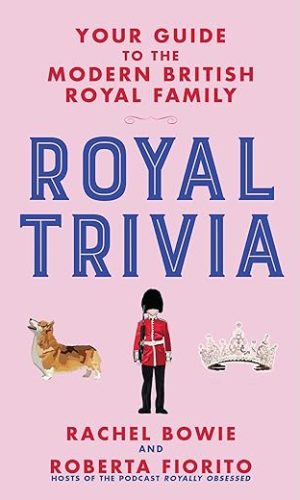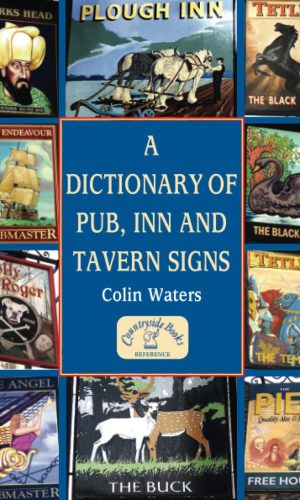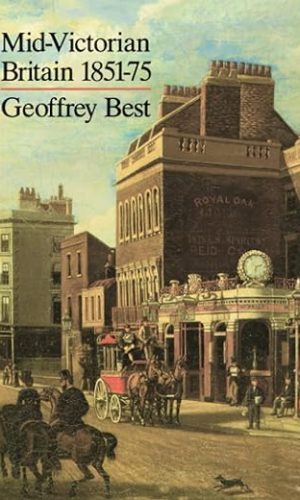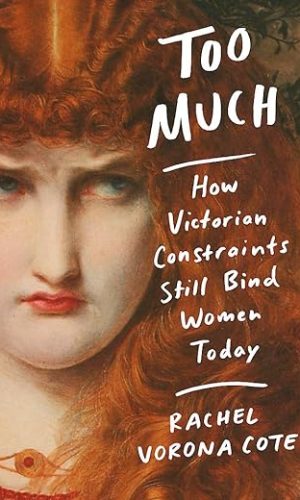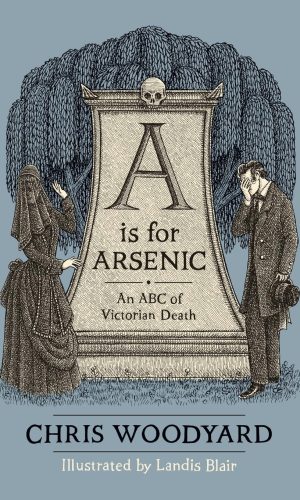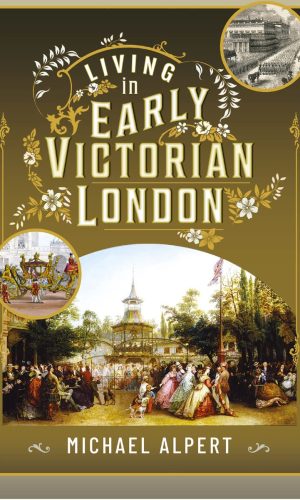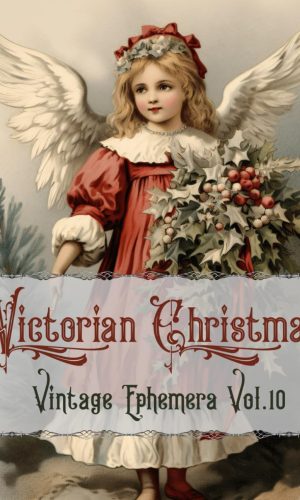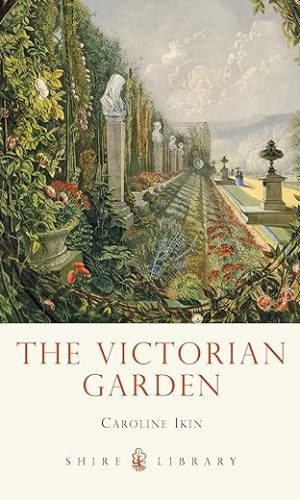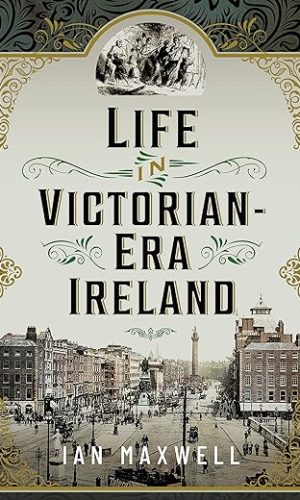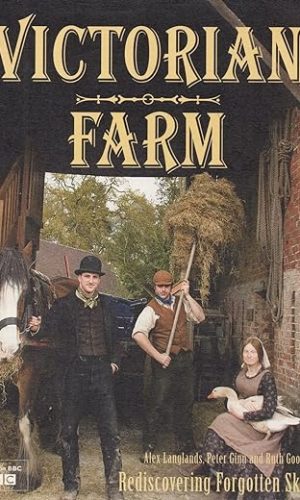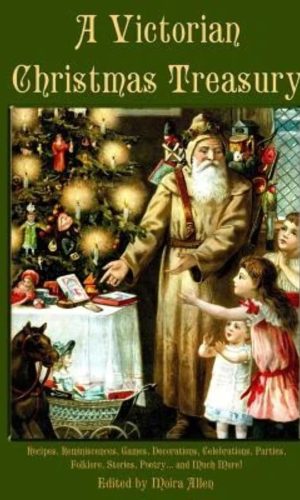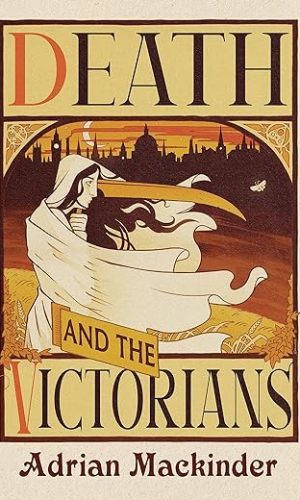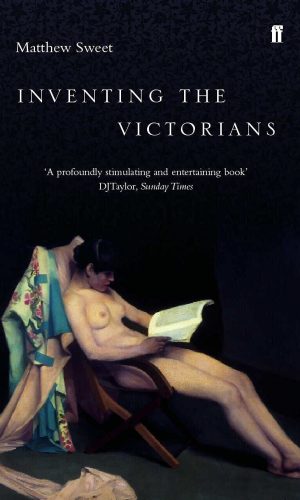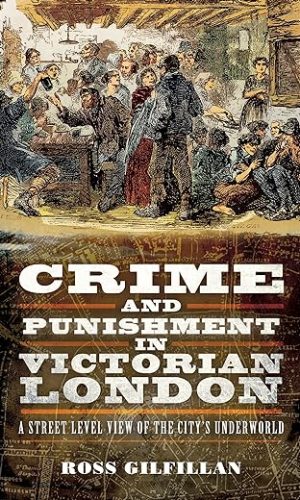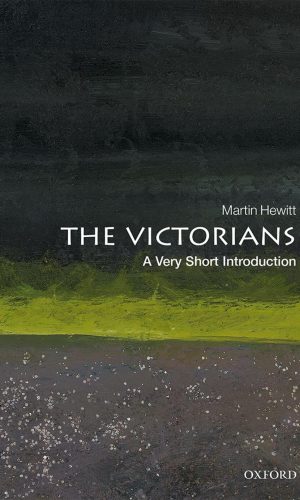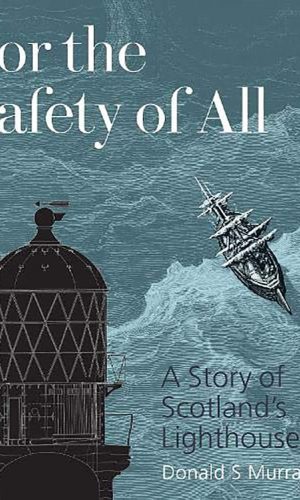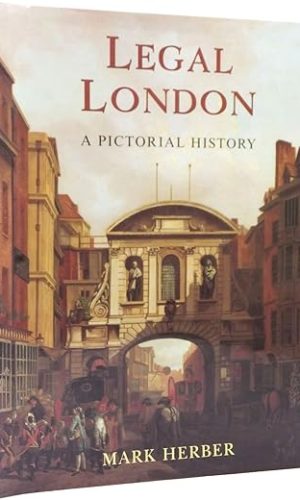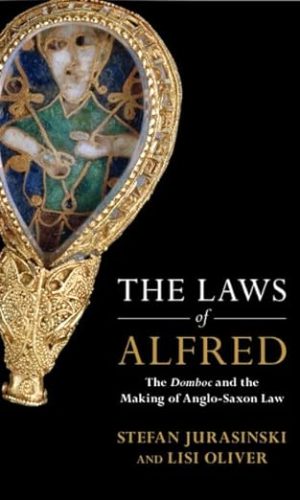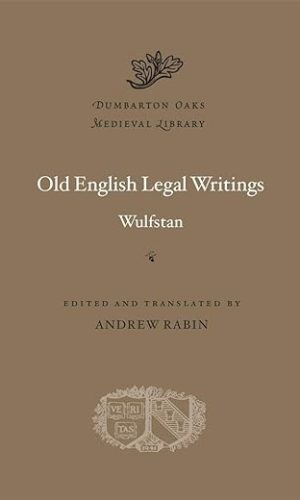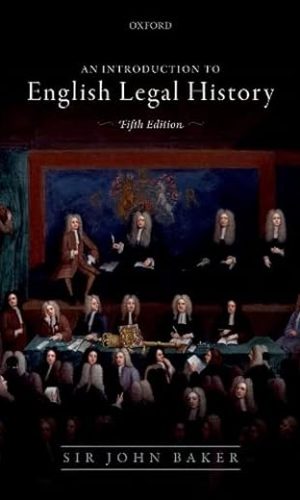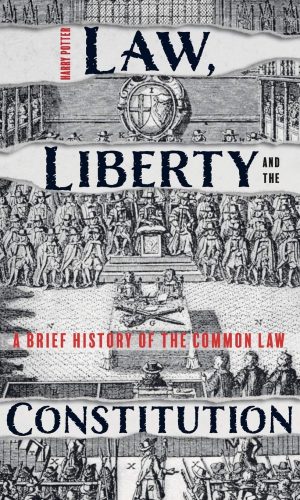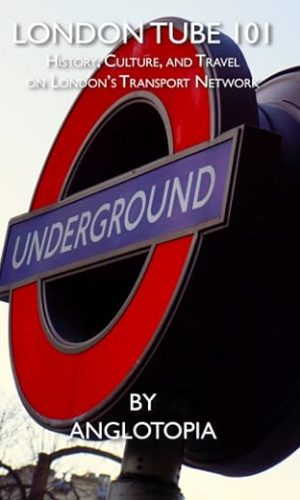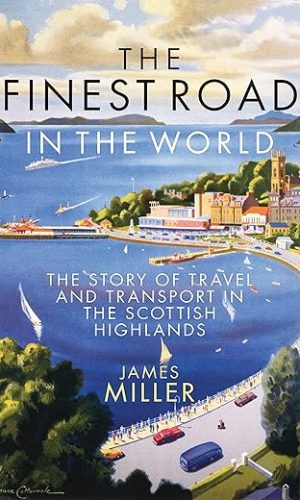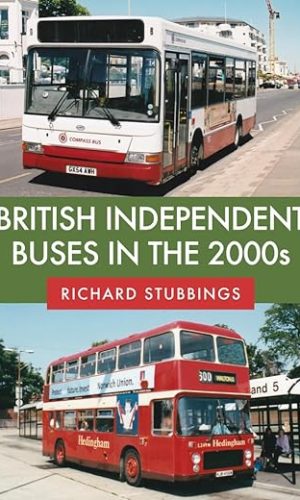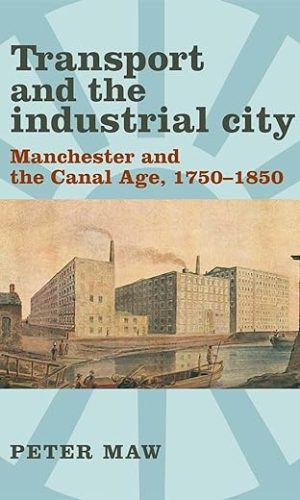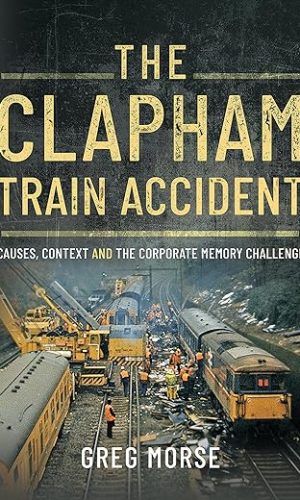Great Britain
-
The Royal Navy Officer’s Pocket-Book
“”The art of command is.to be the complete master, and yet the complete friend of every man on board; the temporal lord and yet the spiritual brother of every rating; to be detached and yet not dissociated.’
A Seaman’s Pocket-Book, 1943′, has found huge appeal with the British public. Presented in the same format, the Officer’s Handbook gathers together useful advice and instruction for those naval officers fighting the Second World War on all aspects of their job, expressed in the benevolent language of the day, when authority was respected.
The Handbook has been compiled and edited by Brian Lavery, who provides commentary and an introduction. Sections include: the Officer’s Aid Memoire containing notes of the training course at one of the officer training schools; Notes for medical officers and treatment of battle casualties afloat; Notes for captains on taking command of their first ship; Notes for commanding officers; Notes on the handling and safety of ships and notes on dealing with disobedience and mutiny.
While suffused with nostalgia and charm, the various contents of this book are an authentic presentation of matters of training, authority and deportment in the wartime navy. The book is sure to appeal not only to those who served in the war or had a relative who was in the officer class, but also to anyone who wants to gain a greater understanding of the day-to-day administration of the wartime navy.Read more
£7.60£9.50The Royal Navy Officer’s Pocket-Book
£7.60£9.50 -
Royal Trivia: Your Guide to the Modern British Royal Family
From Queen Elizabeth II to Prince George, there’s a lot of news to keep up with regarding the royal family. This fantastic compendium of fascinating facts and stories about the British monarchy will keep you in the know about your favourite modern royals. From iconic weddings, fashion moments, philanthropic events, and the birth of new royals, this book has the latest and most interesting tidbits perfect for any enthusiast. Inside you’ll find the royal scoop, including: The official line of succession to the throne, the royal family’s favourite designers and artists, amazing details about coronations, weddings, and other ceremonies, jaw-dropping facts about the Crown Jewels, and much more!Read more
£11.60£14.20 -
A Dictionary of Pub, Inn and Tavern Signs: An A-Z Reference Guide to Pub Names – Their meaning, origin and history
There are few things that symbolise British culture better than the good old-fashioned pub. Over centuries, their colourful hanging signs have become an integral part of the country’s backdrop. But how much do you really know about the names of these pubs, and how they came to have them?
Have you ever found yourself at the Red Lion, the Swan with Two Necks, the Jolly Roger, the Golden Fleece or the Beetle & Wedge, and stopped to wonder how it came by its name? Or what that name might reveal about the history of the building?
The answers to all these questions, and hundreds more, are contained with A Dictionary of Pub, Inn and Tavern Signs.
Here you’ll find out how public drinking houses have changed through history, progressing from the simple custom of hanging grapes outside to boards depicting a name and illustration; how, after the Norman Conquest, some inn-keepers found themselves obliged to display elements of their new lord’s coat of arms – a lion, griffin, deer or hart; how some pubs’ names (the Plough & Harrow or the Three Horseshoes, for example), came to represent the livelihoods of many of the inn’s customers.
This illustrated reference book, arranged alphabetically, provides a brief guide to the meaning, origin and history of these names and sheds light on an important part of Britain’s heritage.
Colin Waters is also the author of A Dictionary of Old Trades, Titles and Occupations and A Dictionary of Saints’ Days, Fasts, Feasts & Festivals.
Read more
£10.40 -
The Sea Kingdoms: The History of Celtic Britain and Ireland
A journey from Shetland to Cornwall reveals – gloriously – the nature and history of the Celts.
‘I have travelled south from Stornoway through all the Hebrides to Ulster, to Galloway, to the Isle of Man, southern and western Ireland. I can report that there is such a place as Celtic Britain, that it shares a common culture, an intimately related history and strikingly similar geography. The story of Celtic Britain can be found in these places.’
The Sea Kingdoms is a narrative history based on a journey from Shetland, down the west coast of Scotland taking in the Isle of Man and the Outer Hebrides, across to Ireland, back to Anglesey and the west Welsh coast, back to Ireland again and finally Cornwall. The heart of the book is the journey from which Moffat strays into the oral histories, legends and known events of the Celts and their past. Its narrative soaked in legend and myth and sensuality, tragedy and gore. In Moffat’s masterful hands,all these apparently disparate stories, fragments of history and myth come together to give the most powerful representation yet of the race who have repeatedly changed history as we know it.
Ranging between pre-history and the present, with much inbetween – The Sea Kingdoms tells the story of a people, stretched down 1,000 miles of coastline that has to be Britain’s richest and most ancient. It also tells the story of the sea itself, which has more than anything shaped the Celtic character.
Read more
£28.50 -
Helicopters and North Sea Oil: A Story of Service, Danger and Survival
A series of personal accounts by highly trained helicopter pilots, including those with distinguished careers in the military and commercial flying, who with divers, ensured that essential staff could operate in North Sea oil exploration and oil supply. They were the vital link in the process and operated in the most challenging circumstances, often in high levels of danger and sometimes with loss of life, for example, the Piper Alpha Disaster which made national news. And the ferrying of essential personnel and supplies could involve rescues as well routine flying missions. The narrative is often technical but written to ensure good understanding for lay readers and it will, of course, appeal to the many with flying experience in the forces, in commercial flying and government service. Above all, it is a series of graphic personal stories as recounted by individuals faced with extremes of climate, weather, technical, engineering and aeronautical problems and often with human life at stake. The people come to life and with domestic and social concerns and interests are ‘real’ and believable people. It is history of the North Sea oil episode in UK political and economic history and in conjunction with international oil politics is of huge importance to Britain’s economy. This is a period of progress to domestic oil independence by about 1984 and so a key period with subsequent importance even to the present. All aspects of the operations are covered within individual stories, and include the broader questions of company policy, regulation, and trade union involvement.Read more
£20.00£23.80 -
The Ingenious Victorians: Weird and Wonderful Ideas from the Age of Innovation
We all know that some of the greatest inventions came from the Victorian age, the successors of which are still with us today. But this book is not entirely about those. It’s more about some of the weird and wonderful inventions, ideas and projects – some successful, others less so – that have largely been forgotten. Where well-known inventions or design concepts are included, it is from a perspective not previously appreciated, with details of the ingenious technology and thinking that led to their introduction and success. Here you can read how Victorian innovators were responsible for: the world’s largest glass structure; an electric railway with lines under the sea and a carriage on stilts 20 feet above the waves; a monster globe that visitors could enter to see the world’s land masses, seas, mountains and valleys modelled on the interior; cameras disguised as bowler hats and many other everyday objects; the London Underground as a steam railway; safety coffins designed to prevent premature burial; unusual medical uses for electricity; the first traffic lights, which exploded a month after their erection in Westminster; and the birth and rapid rise to popularity of the cinema …as well as many other ingenious inventions.Read more
£14.20 -
Moseley 1850-1900: Space, place and people in a middle-class Birmingham suburb
_______
During the second half of the nineteenth century, Moseley, a small hamlet just south of Birmingham, developed into a flourishing middle-class suburb. Drawing on a wealth of primary sources, Janet Berry’s ambitious research asks why and how this particular suburb grew and who was instrumental in its development. What influenced the types of houses that were built and the styles of their gardens? How did residents experience life in the new suburb? How did they create a community?
In analysing an extraordinary quantity of records, Dr Berry builds a notably nuanced portrait of a place and its people that goes beyond stereotypical images of the Victorians. The suburb was a physical, social, cultural, and psychological space where people conveyed messages about their identity; relationships, lived experiences, and responses to change are all revealed.
The economics of buying or renting accommodation in Moseley are addressed, showing what was involved in setting up a single-family home, the key marker of belonging to the middle class. Aspects of this, such as how the interiors of homes were demarcated, decorated and furnished, have not previously been considered in the context of suburban studies to any extent. Additionally, this book has a particular focus on the suburban middle-class woman, her achievements and opportunities, roles and responsibilities, both inside and outside the home.
By the first decades of the twentieth century Moseley had become part of the metropolis of Birmingham. This engaging account of the process from village to fully integrated suburb will be of particular interest to urban historians.
Read more
£15.10£16.10 -
A Victorian Workhouse – The Lives Of The Paupers: Mildenhall Suffolk (History of Mildenhall, Suffolk)
“It is obvious that Danny Pearson, author, has thoroughly researched the history of Mildenhall Workhouse, and has succeeded in writing a book that shines a light on part of Suffolk’s hidden past.
But, instead of being a tedious diary of chronological events, Danny has managed to bring history alive by looking into the lives of certain inmates, and how they did, or did not survive. Sometimes the writing is gory . . . But It’s real! This book is a highly readable account and an intriguing but sometimes gruesome chronicle of life during Victorian times in Suffolk.”Charlie Haylock, Voice Dialect Coach on “The Dig
“Pearson’s account of the lives of Mildenhall Workhouse residents has a well-structured narrative and conversational tone. Not just a chronicle of people and events, Pearson also injects a modern perspective and sense of humour into these stories. As a result, A Victorian Workhouse indirectly asks readers to consider how we can care for people today by laying bare the humanity of those who suffered through poverty in the Victoria era. This is an excellent and well-researched book for both casual readers and lovers of Victorian history.”
Devon Driver
100 Years on since the demolition of the grand Victorian mansion that was the Mildenhall Union Workhouse, this book tells the story of the “Paupers” unfortunate enough to have found themselves confined within it’s walls. The book takes you on a time travelling experience to meet former residents of this market town in rural Suffolk. Discovering grave robbery, disease, suicide, violence and misunderstood mental illness along the way. Discover their story.
Many individuals heartbreakingly fell into the poverty trap, created by the new poor law of 1834, desperate individuals who would never live outside the workhouse again. Any “Paupers” unfortunate enough to die within the workhouse, could find themselves sold to Cambridge University, their bodies used to train Medical students. Even in death the Paupers were owned by the workhouse. Read their story.
However there were inmates who walked proudly away from the institution and these stories can also be found in this book too. Such as the young Mildenhall lad, who had just a few years earlier walked the streets with his mum and sisters, dressed in rags without any food, toes poking out of his worn down shoes. This family tramped the streets looking for shelter on a freezing cold November evening. The same young man a decade later created a new life for himself, literally chasing away the Workhouse shadows in Sunny California, a real life Suffolk cowboy! Read his story.
Who ran the workhouse? Who were the Master and Matron of the Mildenhall Union? Who and what were the Board of Guardians? As well as the stories of the poor, this book reveals the lives of those tasked with caring for the poor. You will discover that the Master has some skeletons in his closet! Discover his story.
If you were to take a short stroll through Mildenhall you would soon discover many of the street names and buildings named after former wealthy residents. Names such as Hanmer, Bunbury, North, Aldrich, famous names not just in Mildenhall but throughout Britain. The poor walked the very same streets as theses famous families, leaving behind little evidence that they were ever here. These lives now carefully pieced back together through years of research using historical records and newspaper archives.
The poor were here too, read their story
Read more
£1.90 -
MID-VICTORIAN BRITAIN 1851-75
One of the most approachable and useful books on the period.Read more
£14.20 -
Too Much: How Victorian Constraints Still Bind Women Today
Lacing cultural criticism, Victorian literature, and storytelling together, Too Much explores how culture corsets women’s bodies, souls, and sexualities – and how we might finally undo the strings.
Written in the tradition of Shrill, Dead Girls, Sex Object and other frank books about the female gaze, Too Much encourages women to reconsider the beauty of their excesses – emotional, physical, and spiritual.
Rachel Vorona Cote braids cultural criticism, theory, and storytelling together in her exploration of how culture grinds away our bodies, souls, and sexualities, forcing us into smaller lives than we desire. An erstwhile Victorian scholar, she sees many parallels between that era’s fixation on women’s ‘hysterical’ behavior and our modern policing of the same; in the space of her writing, you’re as likely to encounter Jane Eyre and Lizzie Bennet as you are Britney Spears and Lana Del Rey. This book will tell the story of how women, from then and now, have learned to draw power from their reservoirs of feeling, all that makes us ‘too much’.
Read more
£3.70£19.00 -
A is for Arsenic: An ABC of Victorian Death
Written by Chris Woodyard, the author of The Victorian Book of the Dead, A is for Arsenic is a guide to the the basics of Victorian mourning and death all illustrated by the incomparable Landis Blair. Each entry includes a pen and ink illustration along with 19th century anecdotes ranging from macabre stories to jokes from the Victorian press. (Plus sinister little poems in homage to Edward Gorey.)
“A is For Arsenic” covers topics including post-mortem photography, embalming, bodysnatching tips, what to wear when in mourning, and how long to mourn for someone who has left you money in their will. The book also debunks several Victorian mourning myths.
There are 26 alphabetical entries-from Arsenic to Zinc, (see below) along with an informative glossary, appendix, and detailed bibliography. Here are the topics: A – Arsenic; B – Bier; C – Crape; D – Death Token; E – Embalming; F – Fisk Burial Case; G – Gates Ajar; H – Hearse; I – Ice Box; J – Jet; K – Keen; L – Lychgate; M – Mute; N – Necropolis; O – Obelisk; P – Post Mortem; Q – Queen Victoria; R – Resurrection Men; S – Shroud; T – Tear Bottle; U – Undertaker; V – Veil; X – Sexton; W – Weepers; Y – Churchyard; Z – Zinc
Appendix: Mourning Etiquette
Glossary
Bibliography
Chris Woodyard, author of The Victorian Book of the Dead, answers your dead-serious questions including:
How long should you mourn for someone who left you money in their will?
Why did body snatchers strip a body beforecarrying it away?
What was a coffin torpedo?
Were mourning clothes poisonous?
What is inheritance powder?
Who killed off keening?
What is dead water?
An A to Z delight for lovers of the macabre!
Read more
£13.50£16.20A is for Arsenic: An ABC of Victorian Death
£13.50£16.20 -
Living in Early Victorian London
London in the 1840s was sprawling and smoke-filled, a city of extreme wealth and abject poverty. Some streets were elegant with brilliantly gas-lit shop windows full of expensive items, while others were narrow, fetid, muddy, and in many cases foul with refuse and human filth. Railways, stations and sidings were devouring whole districts and creating acres of slums or ‘rookeries’ into which the poor of the city were jammed and where crime, disease and prostitution were rife.The most sensational crime of the epoch, the murder of Patrick O’Connor by Frederick and Maria Manning, filled the press in the summer and autumn of 1849. Michael Alpert uses the trial record of this murder, accompanied by numerous other contemporary sources, among them journalism, diaries and fiction, to show how day-to-day lives, birth, death, sickness, work, shopping, cooking, and buying clothes, were lived in the crowded, noisy capital in the early decades of Victoria’s reign. These sources illustrate how ordinary people lived in London, their incomes, entertainments, religious practice, reading and education, their hopes and anxieties. Life in Early Victorian London reveals how ordinary people like the Mannings and thousands of others experienced their multifaceted lives in the greatest capital city of the world.
Early Victorian London lived on the cusp of great improvements, but it was a city which in some aspects was mediaeval. Its inhabitants enjoyed the benefit of the Penny Post and the omnibus, and they were protected to some extent by a police force. The Mannings fled their crime on the railway, were trapped by the recently-invented telegraph and arrested by ‘detectives’ (a new concept and word), but they were hanged in public as murderers had been for centuries, watched by a baying, drunken and swearing mob.
Read more
£8.50 -
Victorian Christmas: Vintage Ephemera Vol.10 (Vintage Victorian Ephemera Collection)
“Victorian Christmas” is an enchanting experience taking you to a world of elegance to inspire your creativity and infuse your celebrations with the beauty and nostalgia of Christmas seen through the lens of the Victorian era. This book is a world of intricately designed tags, delicate cutouts, and exquisite cards that capture the essence of Christmas in the Victorian era. With “Victorian Christmas” in your hands, you’ll have access to a selection of vintage-inspired designs that will take your crafting projects to the next level.Imagine the joy of receiving a handcrafted Christmas card adorned with delicate lace patterns and ornate borders. Picture the beauty of decorating your holiday gifts with carefully crafted tags that evoke memories of a bygone era. With “Victorian Christmas” these visions become a reality.
Not only will this book enhance your creativity, but it will also transport you to a world where handwritten letters, attention to detail, and heartfelt expressions of love and joy were cherished. Let the pages of this book inspire you to create personalized gifts and decorations that are truly unique and evoke the romance and splendor of the Victorian Christmas season.
Read more
£10.90 -
The Victorian Garden: 691 (Shire Library)
Gardening became a popular pastime in Victorian Britain with the rise of suburban gardens, and improvements in technology made gardening more accessible to amateurs. New introductions from abroad brought a greater variety of plants, leading to fashions for massed bedding, exotic glasshouse displays, rock gardens and rhododendrons. The large and prestigious gardens of country houses were emulated in suburban settings as gardening spread to the masses, and the creation of public parks introduced green spaces to grey cities. Caroline Ikin here explores the many aspects of Victorian gardens and gardening and introduces some of the most influential people of the age, including Joseph Paxton, John Loudon and Gertrude Jekyll.Read more
£9.20£9.50The Victorian Garden: 691 (Shire Library)
£9.20£9.50 -
Life in Victorian Era Ireland
There are many books which tackle the political developments in Ireland during the nineteenth century. The aim of this book is to show what life was like during the reign of Queen Victoria for those who lived in the towns and countryside during a period of momentous change. It covers a period of sixty-four years (1837-1901) when the only thing that that connected its divergent decades and generations was the fact that the same head of state presided over them. It is a social history, in so far as politics can be divorced from everyday life in Ireland, examining, changes in law and order, government intervention in education and public health, the revolution in transport and the shattering impact of the Great Famine and subsequent eviction and emigration. The influence of religion was a constant factor during the period with the three major denominations, Roman Catholic, Anglican and Presbyterian, between them accounting for all but a very small proportion of the Irish population. Schools, hospitals, and other charitable institutions, orphan societies, voluntary organisation, hotels, and even public transport and sporting organisations were organised along denominational lines. On a lighter note, popular entertainment, superstitions, and marriage customs are explored through the eyes of the Victorians themselves during the last full century of British rule.Read more
£17.30£19.00Life in Victorian Era Ireland
£17.30£19.00 -
Victorian Farm
No electricity, no gas, no flushing toilet … and no tractor! Could you survive a year on a Victorian farm? In this fascinating time-travelling experiment Lion Television, with the BBC, follow a team of historians who will spend a year recreating farm life in 1885. Accompanying the series, this book follows the team as they try to run a farm using only materials and resources that would have been available to them in the Victorian era.This was a crucial period in the history of Britain – rapid industrialization had radically changed life in the cites but rural communities used a mixture of centuries-old and pioneering modern practices. Packed with informative text and photographs from the farm year, this book reveals exactly what the Victorians, ate, wore, how they managed their animals, farmed the land and organised their lives. In-depth features describe revolutionary advances in more detail, including new inventions, new breeding methods and advances in agricultural science. Practical projects allow you to join the historians in rediscovering Victorian crafts, cookery and homecare.
Providing a real insight into life on a Victorian farm, this series is also a fascinating reminder of how history comes full circle. The organic diet of 1885, use of natural products for cleaning and healthcare and interests in crafts and gardening are of increasing relevance today as we look for a more responsible way of living over 120 years later.
Read more
£3.60Victorian Farm
£3.60 -
A Victorian Christmas Treasury
What do you love most about Christmas? Is it the trees? The lights? The glittering baubles? The cards? The carols? Do you love revisiting the story of Scrooge, or delight in playing “Santa” for your little ones? Chances are, your favorite Christmas traditions have their roots in the Victorian period! Wouldn’t it be wonderful if you could travel back in time and experience an authentic Victorian Christmas? This book is your ticket to exactly that. It gives you a unique opportunity to experience Christmas, Victorian style. It offers rare glimpses into the Victorian home, revealing how Christmas was celebrated in houses great and small. You’ll discover authentic Victorian recipes, decorating ideas, and gift suggestions. Discover Victorian Christmas carols, and find out how some of your favorite Victorian traditions came about. Explore Christmas history and folklore, and see how Christmas was celebrated in other lands during the 19th century as well! This volume brings together dozens of never-before-anthologized articles from a host of Victorian magazines, ranging from the 1840’s to the turn of the century. It’s your ticket to the past — and an opportunity to create your own Victorian-style traditions for years to come!Read more
£11.50 -
The Victorian City: Everyday Life in Dickens’ London
The nineteenth century was a time of unprecedented transformation, and nowhere was this more apparent than on the streets of London. In only a few decades, London grew from a Regency town to the biggest city the world had ever seen, with more than 6.5 million people and railways, street-lighting and new buildings at every turn.
Charles Dickens obsessively walked London’s streets, recording its pleasures, curiosities and cruelties. Now, Judith Flanders follows in his footsteps, leading us through the markets, transport systems, sewers, slums, cemeteries, gin palaces and entertainment emporia of Dickens’ London. The Victorian City is a revelatory portrait of everyday life on the streets, bringing to life the Victorian capital in all its variety, vibrancy, and squalor. No one who reads it will view London in the same light again.
Read more
£12.60£14.20The Victorian City: Everyday Life in Dickens’ London
£12.60£14.20 -
Death and the Victorians: A Dark Fascination
From spooky stories and real-life ghost hunting, to shows about murder and serial killers, we are fascinated by death – and we owe these modern obsessions to the Victorian age. Death and the Victorians explores a period in history when the search for the truth about what lies beyond our mortal realm was matched only by the imagination and invention used to find it. Walk among London’s festering graveyards, where the dead were literally rising from the grave. Visit the Paris Morgue, where thousands flocked to view the spectacle of death every single day. Lift the veil on how spirits were invited into the home, secret societies taught ways to survive death, and the latest science and technology was applied to provide proof of the afterlife. Find out why the Victorian era is considered the golden age of the ghost story, exemplified by tales from the likes of Charles Dickens, Elizabeth Gaskell, Oscar Wilde and Henry James. Discover how the birth of the popular press nurtured our taste for murder and that Jack the Ripper was actually a work of pure Gothic horror fiction crafted by cynical Victorian newspapermen. Death and the Victorians exposes the darker side of the nineteenth century, a time when the living were inventing incredible ways to connect with the dead that endure to this day.Read more
£19.00 -
Victorian London Scenes: Journey Through The Charming Victorian Of London Coloring Book For Adults
Immerse yourself in the charm and elegance of a bygone era with “Victorian London Scenes : Journey Through The Charming Victorian Of London Coloring Book For Adults,” an exquisitely crafted coloring book that transports you back to the enchanting world of 19th-century England. Step into the bustling streets of Victorian London and experience the rich history, architectural marvels, and bustling life of this iconic city.Each illustration takes you on a journey through time, showcasing iconic landmarks, bustling London Street, serene town, and the Victorian life. As you bring these scenes to life with your artistic touch, you’ll find yourself strolling along cobblestone streets lined with elegant townhouses, ornate lampposts, and majestic cathedrals. Immerse yourself in the vibrant energy of the city, as horse-drawn carriages pass by, and finely dressed ladies and gentlemen promenade through the city.
Whether you’re seeking relaxation, a trip through history, or a unique way to explore Victorian London, this coloring book will be your perfect companion. Allow your creativity to flourish and your imagination to wander as you embark on this delightful coloring journey through the enchanting streets of Victorian London. So, pick up your favorite coloring tools and immerse yourself in the romance and elegance of this extraordinary era. Let the enchanting world of “Victorian London Scenes” unfold before your eyes!
Read more
£6.20 -
Inventing the Victorians
Suppose that everything we think we know about ‘The Victorians’ is wrong? That we have persistently misrepresented the culture of the Victorian era, perhaps to make ourselves feel more satisfyingly liberal and sophisticated? What if they were much more fun than we ever suspected? Matthew Sweet’s Inventing the Victorians has some revelatory – and entertaining – answers for us.
As Sweet shows us in this brilliant study, many of the concepts that strike us as terrifically new – political spin-doctoring, extravagant publicity stunts, hardcore pornography, anxieties about the impact of popular culture upon children – are Victorian inventions. Most of the pleasures that we imagine to be our own, the Victorians enjoyed first: the theme park, the shopping mall, the movies, the amusement arcade, the crime novel and the sensational newspaper report. They were engaged in a well-nigh continuous search for bigger and better thrills. If Queen Victoria wasn’t amused, then she was in a very small minority . . .
Matthew Sweet’s book is an attempt to re-imagine the Victorians; to suggest new ways of looking at received ideas about their culture; to distinguish myth from reality; to generate the possibility of a new relationship between the lives of nineteenth-century people and our own.
Read more
£8.30£10.40Inventing the Victorians
£8.30£10.40 -
Crime and Punishment in Victorian London: A Street-Level View of London’s Underworld: A Street-Level View of the City’s Underworld
‘Crime loomed large in the minds of Victorian Londoners. All over the city, watches, purses and handkerchiefs disappear from pockets, goods migrate from warehouses, off docks and out of shop windows. Burglaries are rife, shoplifting is carried on in West End stores and people fall victim to all kinds of ingenious swindles. ‘Pornographers proliferate and an estimated 80,000 prostitutes operate on London’s streets. The vulnerable are robbed in dark alleys or garroted, a new kind of mugging in which the victim is half-strangled from behind while being stripped of his possessions…’ Discover Victorian London’s grimy rookeries, home to thousands of the city’s poorest and most desperate residents. Explore the crime-ridden slums, flash houses and gin palaces from a unique street-level view and meet the people who inhabited them. Ross Gilfillan uncovers London’s lost criminal past in this fascinating account of nineteenth century low-life. Come face to face with pickpockets snatching pocket watches; pornographers peddling guides to lewd London; swindlers deluding the unwary and murderers whose deeds made the headlines and shocked their readers; right through to the consequences of their crimes – prison, transportation, or the gallows!Read more
£10.10£12.30 -
The Victorians: A Very Short Introduction (Very Short Introductions)
bVery Short Introductionsb: Brilliant, Sharp, Inspiring /bThe Victorian period may have come to an end over 120 years ago, but the Victorians continue to be a vital presence in the modern world. Contemporary Britain is still in large part Victorian in its transport networks, sewage systems, streets, and houses. Victorian cultural legacies, especially in art, science, and literature, are still celebrated. The first to have to grapple with many of the challenges of modern urban society, we continue to look to the Victorians for inspiration and solace. And we are increasingly aware of the ways their global actions shaped, often for ill, the world around us. Much mythologised, inexhaustibly controversial, the Victorians are an inescapable reference point for understanding the modern histories not just of Britain and its empire, but of the world.
In The Victorians: A Very Short Introduction Martin Hewitt offers a guide through the thickets of judgement and debate which have grown around the period and its people, to offer a historical overview of the Victorians and their legacies. He seeks to answer five crucial questions. Why have the Victorians continued occupy such a prominent place in the cultures of not just the anglophone world? How far does it make sense to think of a 64-year period arbitrarily given an identity by the longevity of the Queen as an identifiable historical period in a general sense? How justified are the value-laden versions of the Victorians which argue for the existence of a particular world view called ‘Victorianism’? Beyond ideology, what was Victorian Britain actually like – and in particular, what was distinctive about it? Who were the Victorians – not just the eminent few, but the population as a whole? And finally, how far and with what results did the Victorians and their culture spread across the globe?
In answering these questions, Hewitt cautions against some long-held orthodoxies, throws a light on some less well-known aspects of the period, and urges the importance of understanding the Victorians on their own terms if we are to effectively engage with their legacies.
ABOUT THE SERIES: The Very Short Introductions series from Oxford University Press contains hundreds of titles in almost every subject area. These pocket-sized books are the perfect way to get ahead in a new subject quickly. Our expert authors combine facts, analysis, perspective, new ideas, and enthusiasm to make interesting and challenging topics highly readable.
Read more
£7.10£8.50 -
For the Safety of All: A Story of Scotland’s Lighthouses
Lighthouses punctuate Scotland’s coastline – a stoic presence on the edge of the landscape. Since the earliest of these hardy structures were raised, they have been a lifeline for seafarers at the mercy of treacherous weather and uncertain navigation. Today over 100 of Scotland’s lighthouses are listed buildings.
The lighthouse is now one of many maritime resources which act ‘for the safety of all’. But we are still drawn to the solitary life of the keeper, the beauty of the lens of the lamp and the calm reassurance of a flashing light on a distant shore.
Donald S Murray explores Scotland’s lighthouses through history, storytelling and the voices of the lightkeepers. From ancient beacons to the work of the Stevensons and the Northern Lighthouse Board, and from wartime strife to automation and preservation, the lighthouses stand as a testament to the nation’s innate connection to the sea.
Published in partnership between Historic Environment Scotland and the Northern Lighthouse Board.
Read more
£13.10£14.20 -
Deal & District at War
Much emphasis has been given to the Second World War experiences of East Kent’s ‘frontline’ towns of Dover, Folkestone and Thanet, but the ancient port and town of Deal suffered equally from enemy bombing and shelling. Deal bore the disadvantage of being located opposite the notorious Goodwin Sands, where many vessels and even some aircraft were lost. From the time of the Dunkirk evacuation in May/June 1940 until after D-Day some four years later, the residents of Deal withstood all that the enemy threw at them. Richly illustrated, Deal and District at War recounts many unique and controversial events which include: a German coastal raid in Sandwich Bay when at least 1 British soldier was snatched; an enemy pilot entertained by a local family after being shot down; cases of smuggling and ‘services rendered’ by Walmer lifeboat; and the world-famous ‘Lifeboat Doctor’ James Hall. This book will evoke powerful memories for those whose families experienced the war and provide fascinating reading for anyone interested in the history of Deal and District.
Read more
£12.20£14.20Deal & District at War
£12.20£14.20 -
The Sale of the Late King’s Goods: Charles I and his Art Collection
`So wonderful and glorious a collection, that the like will never again be met with.’ This is how one awed and wistful observer described King Charles’ artworks. As an acquirer of paintings by Europe’s great masters and patron of Rubens and Van Dyck, Charles’s extravagance in amassing his collection only exacerbated the parliamentary disapproval that led to civil war and the King’s own execution. After his death, one of the Commonwealth’s first decrees was to sell off his treasures to raise money for the new regime. After the Restoration, one of Charles II’s first resolutions was to get the collection back.
Jerry Brotton tells the remarkable story of the king and his pictures: their acquisition, dispersal and eventual recovery. He reveals a world in which diplomats doubled as art dealers, and in which the king’s plumber could be temporary owner of Bassano’s The Flood. This is a vivid portrait of a tragic king and his decadent court, set against the backdrop of political conflict and civil war, which also offers a new and compelling perspective on art and the evolution of collecting in England.
Read more
£3.20 -
Legal London: A Pictorial History
London has been home to more lawyers, for more centuries, than any other city on earth. Paris ran it neck-and-neck until the 18th century, after which London romped away as the national and then imperial capital of a legal system with centralized Royal Courts of Justice, Inns of Court, Courts of Appeal, debtors prisons, the Old Bailey, the Archbishop’s Court at St Mary le Bow, the Bridewell, the notorious Fleet Prison, and the Metropolitan Police. No other city so celebrates, in surviving buildings and institutions, the work of judges, lawyers, litigants, criminals, and the police! This new book does justice to them all. Covering both civil and criminal aspects of the law, the author’s narrative account is enormously expanded by 200 photographs and engravings, each fully captioned; plus maps to show the location of the courts, Inns, prisons, and other places of punishment throughout the metropolis. This fascinating study of the law at work in days gone by is both entertaining and informative. Though of particular value to everyone interested in London history, it will appeal to members of the legal and law enforcement professions everywhere that the “English” system and tradition has left its mark.Read more
£3.20 -
The Laws of Alfred: The Domboc and the Making of Anglo-Saxon Law (Studies in Legal History)
Alfred the Great’s domboc (‘book of laws’) is the longest and most ambitious legal text of the Anglo-Saxon period. Alfred places his own laws, dealing with everything from sanctuary to feuding to the theft of bees, between a lengthy translation of legal passages from the Bible and the legislation of the West-Saxon King Ine (r. 688–726), which rival his own in length and scope. This book is the first critical edition of the domboc published in over a century, as well as a new translation. Five introductory chapters offer fresh insights into the laws of Alfred and Ine, considering their backgrounds, their relationship to early medieval legal culture, their manuscript evidence and their reception in later centuries. Rather than a haphazard accumulation of ordinances, the domboc is shown to issue from deep reflection on the nature of law itself, whose effects would permanently alter the development of early English legislation.Read more
£21.80 -
Old English Legal Writings: 66 (Dumbarton Oaks Medieval Library)
Archbishop Wulfstan of York (d. 1023) was a powerful clergyman and the most influential political thinker of pre-Conquest England. An advocate for the rights and privileges of the Church, he authored the laws of King Aethelred and King Cnut in prose that combined the rhetorical flourishes of a master homilist with the language of law. Some works forged a distinctive style by adding rhythm and alliteration drawn from Old English poetry. In the midst of Viking invasions and cultural upheaval, Wulfstan articulated a complementary relationship between secular and ecclesiastical law that shaped the political world of eleventh-century England. He also pushed the clergy to return to the ideals of their profession. Old English Legal Writings is the first publication to bring together Wulfstan’s works on law, church governance, and political reform. When read together, they reveal the scope and originality of his thought as it lays out the mutual obligations of the church, the state, and the common people. This volume presents new editions of the Old English texts alongside new English translations.Read more
£26.90 -
An Empire of Laws: Legal Pluralism in British Colonial Policy (Yale Law Library Series in Legal History and Reference)
A compelling reexamination of how Britain used law to shape its empire
For many years, Britain tried to impose its own laws on the peoples it conquered, and English common law usually followed the Union Jack. But the common law became less common after Britain emerged from the Seven Years’ War (1754–63) as the world’s most powerful empire. At that point, imperial policymakers adopted a strategy of legal pluralism: some colonies remained under English law, while others, including parts of India and former French territories in North America, retained much of their previous legal regimes.
As legal historian Christian R. Burset argues, determining how much English law a colony received depended on what kind of colony Britain wanted to create. Policymakers thought English law could turn any territory into an anglicized, commercial colony; legal pluralism, in contrast, would ensure a colony’s economic and political subordination. Britain’s turn to legal pluralism thus reflected the victory of a new vision of empire―authoritarian, extractive, and tolerant―over more assimilationist and egalitarian alternatives. Among other implications, this helps explain American colonists’ reverence for the common law: it expressed and preserved their equal status in the empire. This book, the first empire-wide overview of law as an instrument of policy in the eighteenth-century British Empire, offers an imaginative rethinking of the relationship between tolerance and empire.Read more
£52.30 -
Introduction to English Legal History
Fully revised and updated, this classic text provides the authoritative introduction to the history of the English common law. The book traces the development of the principal features of English legal institutions and doctrines from Anglo-Saxon times to the present and, combined with Baker and Milsom’s Sources of Legal History, offers invaluable insights into the development of the common law of persons, obligations, and property, and also of criminal and public law. It is an essential reference point for all lawyers, historians and students seeking to understand the evolution of English law over a millennium.The book provides an introduction to the main characteristics, institutions, and doctrines of English law over the longer term – particularly the evolution of the common law before the extensive statutory changes and regulatory regimes of the last two centuries. It explores how legal change was brought about in the common law and how judges and lawyers managed to square evolution with respect for inherited wisdom.
Read more
£42.70 -
Law, Liberty and the Constitution: A Brief History of the Common Law
A new approach to the telling of legal history, devoid of jargon and replete with good stories, which will be of interest to anyone wishing to know more about the common law – the spinal cord of the English body politic. Throughout English history the rule of law and the preservation of liberty have been inseparable, and both are intrinsic to England’s constitution. This accessible and entertaining history traces the growth of the law from its beginnings in Anglo-Saxon times to the present day. It shows how the law evolved from a means of ensuring order and limiting feuds to become a supremely sophisticated dispenser of justice and the primary guardian of civil liberties.This development owed much to the English kings and their judiciary, who, in the twelfth century, forged a unified system of law – predating that of any other European country – from almost wholly Anglo-Saxon elements. Yet by theseventeenth century this royal offspring – Oedipus Lex it could be called – was capable of regicide. Since then the law has had a somewhat fractious relationship with that institution upon which the regal mantle of supreme power descended, Parliament. This book tells the story of the common law not merely by describing major developments but by concentrating on prominent personalities and decisive cases relating to the constitution, criminal jurisprudence, and civil liberties. It investigates the great constitutional conflicts, the rise of advocacy, and curious and important cases relating to slavery, insanity, obscenity, cannibalism, the death penalty, and miscarriages of justice. The book concludes by examining the extension of the law into the prosecution of war criminals and protection of universal human rights and the threats posed by over-reaction to national emergencies and terrorism. Devoid ofjargon and replete with good stories, Law, Liberty and the Constitution represents a new approach to the telling of legal history and will be of interest to anyone wishing to know more about the common law – the spinal cordof the English body politic. Harry Potter is a former fellow of Selwyn College, Cambridge and a practising barrister specialising in criminal defence. He has authored books on the death penalty and Scottish history andwrote and presented an award-winning series on the history of the common law for the BBC.Read more
£15.90£19.00 -
London Tube 101: History, Culture, and Travel on London’s Transport Network
We are thrilled to announce Anglotopia’s newest book: London Tube 101- History, Culture, and Travel on London’s Transport Network. This new publication is your complete guidebook to London’s iconic transport network’s history, culture, and guide to using the famous London Tube network. The book will be released in September and we need to start pre-orders now.
We do a deep dive into the London Tube’s fascinating history, covering the history of the tube network, fascinating stories, London’s abandoned and hidden Tube stations and so much more. This comprehensive book covers everything from the first Metropolitan Railway to the newly opened Elizabeth Line. In addition to all of this, we’ll provide useful and practical information using the network on your travels. It’s a combination of a history book, guidebook, and culture book.
Following a similar format to our previous books, such as 101 Budget Britain Travel Tips and 101 London Travel Tips it is a pleasure to read. Tube enthusiasts will adore this 300-page book, sure to learn something new about the most famous rail network in the world. From the history of every tube line, including facts about each tube line, to long-reads on the history of specific Tube-related topics, this comprehensive guide is a must-have for the Tube enthusiast.
Read more
£19.00 -
The Finest Road in the World: The Story of Travel and Transport in the Scottish Highlands
Trains and stagecoaches stuck in the snow, wild storms driving sailing ships off course, traffic pile-ups on so-called ‘killer’ highways – stories abound about the horrors of travel in the Highlands and Islands, and have done for as far as the records go back.
James Miller tells the dramatic and sometimes surprisingly humorous story of travel and transport in the Highlands. Some of the figures in the story are familiar – General George Wade, Thomas Telford and Joseph Mitchell among them – but there are a host of others too, including the intrepid Lady Sarah Murray, who offered sound advice for travellers (‘Provide yourself with a strong roomy carriage, and have the springs well corded’).
This thought-provoking book will appeal to all who like stories of travel and transport, and are interested in how changing modes of transport have affected the ways of life in the Highlands and remain crucial to the modern life and the future of the region.
Read more
£2.90 -
RAF Transport Aircraft (Modern Military Aircraft Series)
From their modest origins with BE.2c and Vickers Victoria biplanes delivering food and ammunition in the Mesopotamian deserts to the massive Globemasters delivering hardware in the same theatre a century later, transport aircraft have played a key role in Britain’s wars. It was the Cold War that saw transport aircraft become necessary war-fighting equipment. Operation Corporate in 1982 identified the need for large-capacity strategic transport aircraft, something reinforced by Operation Granby in 1990-91, and led to the acquisition of the Lockheed TriStar and Boeing C-17A Globemaster. When the operations in Afghanistan and Iraq began, the RAF’s transport fleet was ready, and with the new model Hercules, and the Airbus Voyager and Atlas, Britain’s armed forces have a transport force second to none. First in, last out’ is a concise description of the operations of the RAF’s transport force. Since 1915, aircraft have supported troops on the ground, carried personnel to and from war zones, evacuated civilians and provided succour to the needy. RAF Transport Command’s motto, Ferio Ferendo, translates as I strike by carrying’, and that is exactly what transport aircraft have done for over a century. With over 130 photographs, this book describes the evolution of the aircraft that provided the airlift capacity for Britain’s armed forces wherever they served, and as the 2021 Operation Pitting showed, transport aircraft are still last out.Read more
£12.10£15.20 -
British Independent Buses in the 2000s
Roaring through the millennium into the twenty-first century we find the Transport Act 2000 that allows for increased cooperation between local authorities and operators, something that had not been allowed previously under competition legislation. Increasingly through the 2000s local authorities and county councils are taking responsibility for funding local bus services. The vehicles in use are changing as more and more operators invest in accessible buses. By the beginning of 2008, towards the end of the period covered by this book, 58 per cent of the UK bus fleet is low-floor. Again, we see the demise of some well-known operators, the takeover of some by the big bus groups, and, on the plus side, the rise in importance of others. Illustrated with previously unpublished images, this volume portrays the vehicles in use with independent companies through the first decade of the twenty-first century.Read more
£11.20£14.20British Independent Buses in the 2000s
£11.20£14.20 -
The British Transport Commission Group: Former Thomas Tilling Companies in the 1960s
This fascinating and informative book looks at the Tilling Group of bus companies during the 1960s. These operated approximately half of the inter-urban and rural bus services in England and Wales, and were nationalised by Clement Attlee’s Labour Government in 1948 under the control of the British Transport Commission. Ownership passed to the Transport Holding Company Ltd in 1963, though the fleets remained under Tilling Group control. During the period covered by this book, the operators within the group had very standardised fleets, with the vast majority of their buses and coaches having Bristol chassis and Eastern Coachworks (ECW) bodywork. This was a result of these manufacturers also having been nationalised and controlled by the BTC and THC. However, some Tilling Group operators still had earlier vehicles with, for instance, AEC or Leyland chassis, which were acquired prior to the requirement for them to buy only Bristol products, whilst some also had coaches with Bedford or Ford Thames chassis built in the 1950s and 1960s. Unlike the BET fleets throughout England and Wales, most Tilling fleets also had highly standardised liveries, either of red with cream relief, or green with cream relief for their stage carriage buses, or the reverse of this for their coaches. There were some exceptions, though. The most obvious ones were Midland General and Notts & Derby, whose livery was an attractive dark blue and cream; as well as the Royal Blue coaches of Southern and Western National and the maroon and cream coaches of Thames Valley subsidiary South Midland. All Tilling Group companies became part of the National Bus Company in early 1969, and before long their traditional liveries became just a memory when the NBC imposed standard red or green liveries. Throughout most of the 1960s, Jim Blake travelled to these operators and photographed their vehicles, and spent many summer Saturdays at London’s Victoria Coach Station, where their service buses as well as express coaches could be seen. He was fortunate to capture much of this changing transport scene on film, and presents some of these photographs in this volume. Many have never been published before.Read more
£11.70£23.80 -
Great Western Pannier Tank Classes: An Overview of Their Design & Development (Locomotive Portfolios)
This comprehensive and fully illustrated history presents an in-depth look at the Great Western Railway’s various pannier tank engines.
Though hauling freight was a vital part of Great Western Railway’s history—and where it made the majority of its profit—there are few books devoted to the stout, powerful engines that did the work. In Great Western, Pannier Tank Classes, British Railways expert David Maidment corrects that oversight. This volume explores the large number of 0-6-0 saddle tanks built for both the Great Western Railway and the independent railway companies in South Wales, most of which were converted to pannier tanks in the Churchward and Collett eras.
While covering the Armstrong and Dean engines in detail, Maidment goes on to describe the design, construction and operation of the largest class of steam engines built in the UK in the last century: Charles Collett’s GWR 5700 class, examples of which were still being built after nationalization. Collett also designed pannier tank engines for branch passenger and freight work, and his successor Frederick Hawksworth continued the GW tradition with a tapered boiler version. All of these are discussed in depth in terms of their design and service. A concluding chapter covers further designs that were never built.Read more
£8.50 -
Transport and the Industrial City: Manchester and the Canal Age, 1750-1850
This book presents the first scholarly study of the contribution of canals to Britain’s industrial revolution. Although the achievements of canal engineers remain central to popular understandings of industrialisation, historians have been surprisingly reticent to analyse the full scope of the connections between canals, transport and the first industrial revolution. Focusing on Manchester, Britain’s major centre of both industrial and transport innovation, it shows that canals were at the heart of the self-styled Cottonopolis. Not only did canals move the key commodities of Manchester’s industrial revolution -coal, corn, and cotton – but canal banks also provided the key sites for the factories that made Manchester the ‘shock city’ of the early Victorian age. This book will become essential reading for historians and students interested in the industrial revolution, transport, and the unique history of Manchester, the world’s first industrial city.Read more
£57.80£66.50 -
The Clapham Train Accident: Causes, Context and the Corporate Memory Challenge
Clapham was a pivotal point in British railway history. Much technology had been invented and applied to accident prevention by 1988; much more was to come. The Clapham Train Accident considers Clapham in its wider context, using official reports and expert interviews to describe both the causes and the terrible effects. It looks beyond the railway to the external factors acting not only on British Rail, but also the government of the time, and considers the safety improvements that came about as a result. Finally, the book brings the story up to date and looks at why the lessons learned over thirty years ago still need to be retained in an industry where the baton of safety is all-too-easily dropped during re-organisation, re-branding and after the departure of those who lived through darker days to make ours shine more brightly. The concatenation of events, the errors, the reorganisations, the financial constraints, that led to Clapham could happen to any business in any industry. On the morning of 12 December 1988, they happened to the railway. The Clapham Train Accident will act as a cautionary tale for safety practitioners old and new, not just in rail, but also other safety critical industries. It will help readers think actions through to all consequences, helping them too to make safer decisions, particularly when changing a system, technology or method of workingRead more
£12.20





